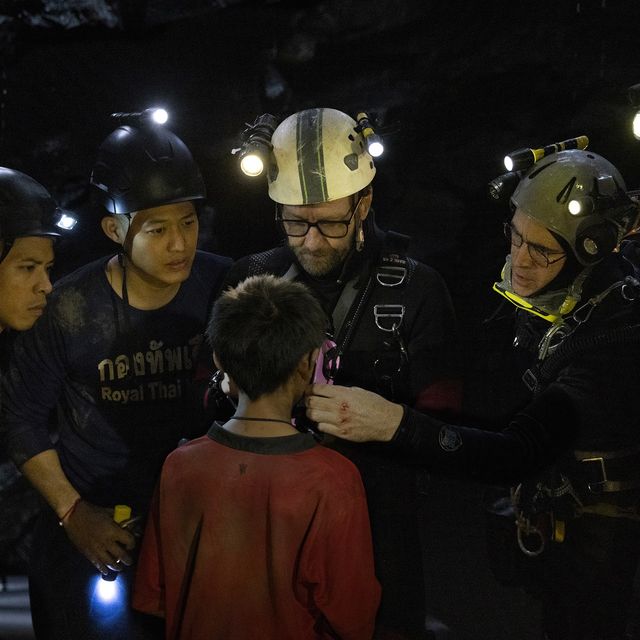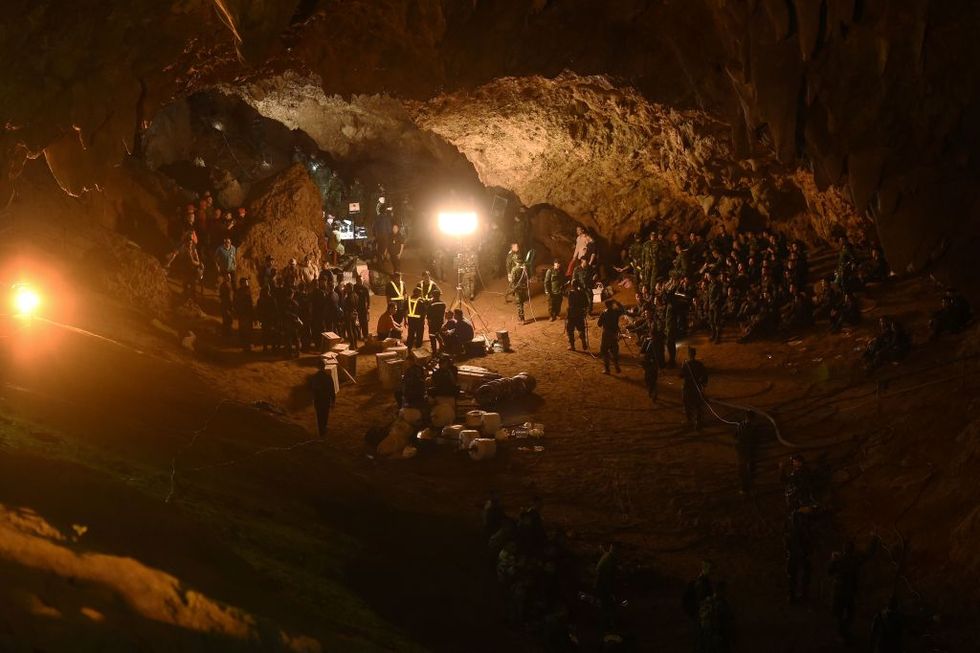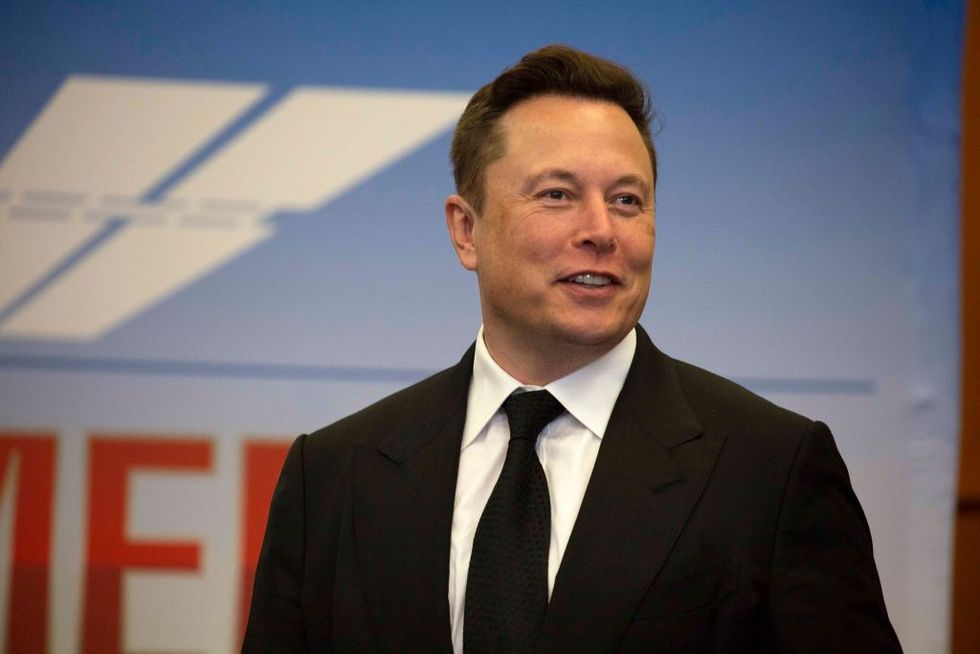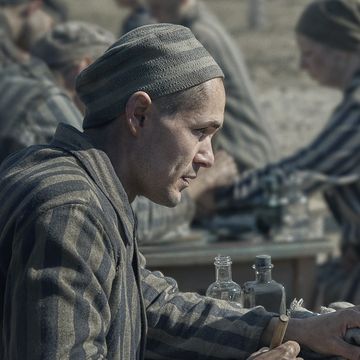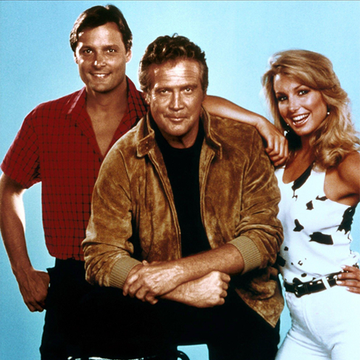When something spectacular happens in the news, you can bet that production on a documentary, movie or eight-part TV series is already kicking into gear. Sometimes all three, if the story is compelling enough.
See: the dramatic rescue of 12 teenage boys and their football coach stuck in a flooded cave in Thailand in 2018.
First off the block was 2019’s The Cave by Tom Waller, which was a mix of news footage and reconstructions. The brilliant National Geographic documentary, The Rescue, directed by Elizabeth Chai Vasarhelyi and Jimmy Chin, was next to hit screens in 2021, and it wasn't long before the starry, Hollywood version of events, Thirteen Lives, featuring Viggo Mortensen and Colin Farrell and with Ron Howard as director, was announced. It will have a brief cinema launch before jumping over to Amazon Prime Video on 5 August, 2022, just pipping Netflix’s retelling of the story, Thai Cave Rescue, on September 22, to the post. Then, please, I beg of producers and directors, no more.
It’s obviously a tale that has enthralled the public – though even their interest might wane after film number two – but, dramatic reconstructions aside, what actually happened in the accident and how did the boys escape in the end?
The accident
After a football practice on Saturday 23 June, 2018, twelve boys from the youth team Wild Boars aged between 11 and 16, decided to explore a cave with their 25-year old assistant coach, Ekkaphon Chanthawong.
The cave was part of a 10-kilometres-long complex beneath the Doi Nang Non mountain range, on the border between Thailand and Myanmar, and regularly floods in the rainy season. However, the boys either didn’t see or didn’t notice a sign warning this as they entered.
The alarm was raised at around 7pm that evening when the boys failed to return home and the head coach went to the caves, only to find abandoned bikes and belongings of the boys, and water seeping out from the pathways.
There was rising water and strong currents and no contact was made with them. Thai Navy Seal divers – working with a British diver, Vern Unsworth, who lived in the area and knew the caves well – said the water was too murky to be able to progress. An international appeal was made for help with the rescue: A US Air Force team and rescue squadron arrived, as did an Australian Specialist Response Group and a team of divers from the Beijing Peaceland Foundation.
British Cave Rescue Council’s Richard Stanton and John Volanthen started making their way through the caves, alongside Belgian cave diver Ben Reymenants and French diver Maksym Polejaka. But these attempts were thwarted by the intense rainfall and strong currents that were surging through the caves.
Finally, on 2 July, Stanton and Volanthen found the boys on a ledge about four kilometres from the mouth of the cave, a trip which took about six hours from start to finish. Volanthen told the BBC they “smelt the children before they saw them”. But as Chiang Rai provincial governor Narongsak Osatanakorn said: “We found them safe. But the operation isn't over.”
It was another week before the boys were freed. In that time, they were joined by Navy Seals who provided them with health care checks to ensure they were medically fit, and enough “easy-to-digest, high-energy food with vitamins and minerals” was fed to the starving boys.
The escape was made more difficult by the fact that a few of the boys didn’t know how to swim, which is what may have led to them getting trapped. There were furious discussions as to the best way to get them out, facing rising water levels (which were being pumped out) and lowering oxygen levels within the caves. Ideas such as drilling another exit, finding an alternative exit or teaching the boys to dive were all suggested. In the end, on 8 July, 18 rescue divers were sent into the caves to retrieve the boys, with one diver to accompany each boy.
The group were all dressed in wetsuits and buoyancy aids and according to WebMD, the boys were dosed with ketamine, Xanax and the drug atropine to knock them out, so they wouldn’t panic on the trip and endanger the lives of the diver they were attached to. Slowly, the divers transported the boys by holding on to their backs or chests, hoping that their oxygen masks wouldn’t be dislodged by travelling through rocky paths.
By 10 July – after a total of 18 days in the cave – all of the group had been successfully transported to hospital. Unfortunately, two men died in the rescue, Saman Kunan on 5 July, and Beirut Pakbara, a year later following a blood infection he contracted in the caves.
More than 10,000 people were involved in the rescue in the end, including more than 100 divers. The missions also involved pumping more than a billion litres of water from the caves.
Why did Elon Musk wade into this all?
In one of the more random parts of this whole story, Elon Musk was alerted to the plight of the boys and offered the help of SpaceX. He tweeted that he was working on a “tiny, kid-size submarine” constructed out of parts from a Falcon 9 rocket to help them with the exit.
However, the rescue effort did not take Musk up on his offer. One of the divers, Vern Unsworth, told Business Insider: “It just had absolutely no chance of working. He had no conception of what the cave passage was like. The submarine, I believe, was about 5ft 6in long, rigid, so it wouldn’t have gone round corners or round any obstacles”, adding to CNN it was a “PR stunt” and he could “stick his submarine where it hurts”.
Musk then tweeted a false slur against Unsworth, calling him a “pedo guy”, and in December 2019, Unsworth took Musk to court for defamation. Musk’s lawyers argued it was no more than a playground insult and did not represent an allegation of paedophilia. The jury agreed and Musk was cleared of the charge.
